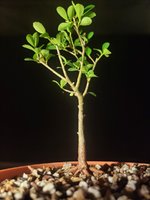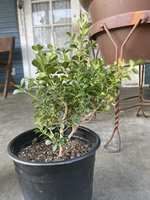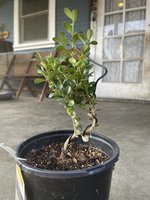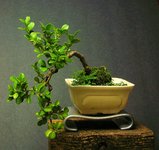I'm 66 yrs right now, I started bonsai when I was 15 years old, became fascinated with photos from books and photos my father took in Japan. I was cocky, I thought I could teach myself from books and eventually the internet, that is when Al Gore got around to "inventing the internet" (that's a joke, Gore didn't invent the internet). I was about 48 years old when I took a critical look at my bonsai. One of my trees had survived all my childhood mistakes, it had been with me since I was 15, a pomegranate, a good critical look and I realized it still looked like crap. A shrub in a pot. Over 35 years of reading books and going my own way and none of my 30+ some trees looked like much of anything. That is when I decided to join a club. To get some hands on experience. I joined the Milwaukee Bonsai Society because one member, Jack Douthitt was there. I had seen his trees at shows at our local botanic garden. I wanted to get time with him to pick his brain.
So that was 2004. The experience was eye opening. Probably the biggest revelation was learning that there are techniques for different stages in the tree's development. With pines, candle pruning is only for certain pines, and not for any young material, it is only for later stage, developed material. Pinching a maple right after the first 2 leaves appears is only for more mature, developed maples, not for a young seedling. All the nuances of timing and when to apply what technique were things the books, and internet can not teach you. Also made a new bunch of friends. All in all, it was the best experience for me.
So not everyone is a club "joiner", but I really strongly suggest you join a club, so you can see in person various techniques applied and get hands on experience. Study groups are good too, very good, bonsai societies tend to be the host for study groups, or the vehicle through which people find each other to form study groups.
And most important, it is though clubs that you can sometimes get very affordable advanced material. The average age of Milwaukee Bonsai Society is around 60, with a number of members in their 80's or older, and a few members as young as 11 or 12, some in their 20's and a scattering of all ages. It seems once a year, sometimes more, occasionally less, one of our senior members is forced to downsize or has a health crisis. You can often pick up show quality trees at very modest prices. Sometimes a dead brings a number of trees to the club. More often it is members selling a home and moving to an apartment or care home situation.
There is a HUGE difference in care a mature, show quality tree will require versus seedlings, and young nursery sourced material. A mature azalea, or pomegranate, or elm will require as much as 8 to 10 hours just to wire out foliage pads. This gets done at least once a year. Just removing spent flower buds on an azalea can take a couple hours. The detail work a refined tree needs every year is difficult to appreciate until you have done it yourself. Here a club is good because often senior members will bring a tree in, or invite someone over to help with their own trees. Everyone should have some trees they are raising from seed, some that are from young nursery stock, maybe a wild collected yamadori or two, and one or two exhibition quality trees. That sort of diversity will teach you more about bonsai than just having one phase of the hobby going.
So join a club, or at least attend a few meetings. We had someone in the Milwaukee society attend meetings for years, and when they got elected to the board, they finally admitted they had not bothered to join, they paid up dues for a year and then took their position on the board. Most clubs are pretty casual about letting people attend without joining, so you can see if you like the group. Each group has their own dynamics. I live between Chicago and Milwaukee, travel time to either club is about the same. The Chicago club had many members wearing business suites, as they came to the Monday night meetings straight from the office. Average income for the Chicago group was pretty high. The Milwaukee group meets Tuesday evening, and the attire was mostly blue jeans and flannel shirts, very Wisconsin. I ended up joining the Milwaukee group, as I am more comfortable in blue jeans and flannel shirts. So each group has their own dynamics.
On the American Bonsai Society website they list all the member clubs. Look over the Pennsylvania listing and check out all the clubs within a reasonable drive from your place. If you are lucky, you might have more than one club in a "reasonable drive".
Bonsai Clubs – USA Click on each state on the map to view the directory of bonsai clubs for that state, or just scroll down the page.This information is provided as a courtesy to the bonsai c…

www.absbonsai.org








